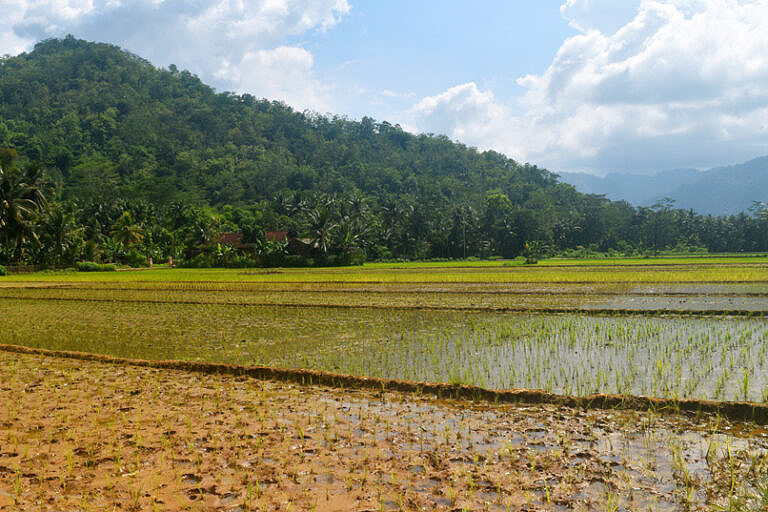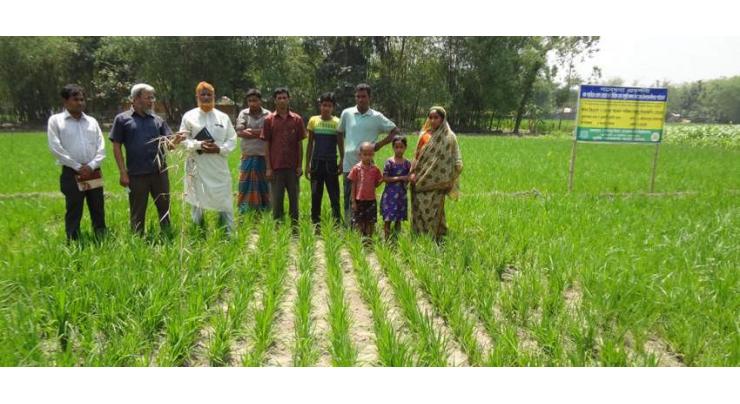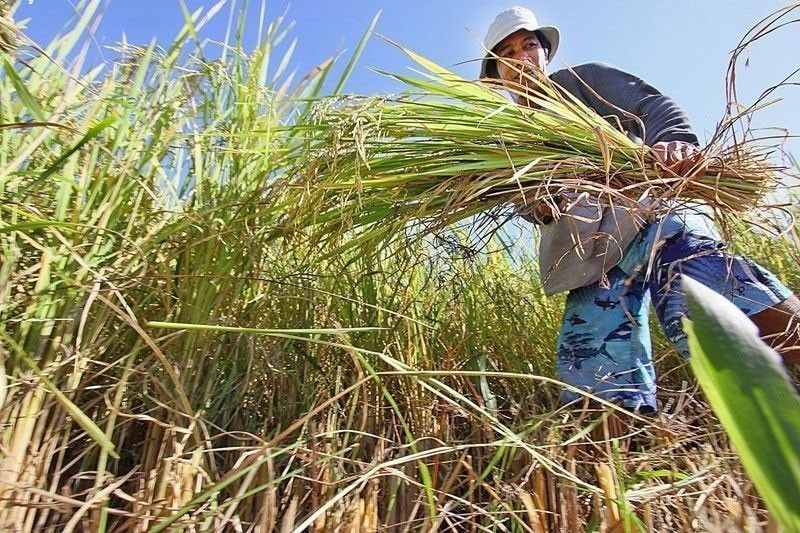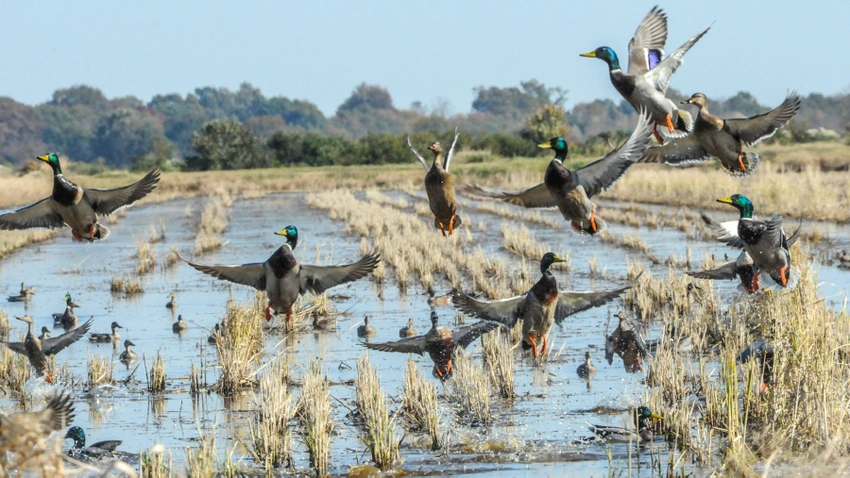Tags
Java rice farmers suffer crop failure as copper mine pollutes local irrigation
- Rice farmers in Cokrokembang village, East Java province, suspect contamination from a nearby copper mine operated by PT Gemilang Limpah Internusa is to blame for recent crop failures.
- Water pollution from the mine is visible in the Kedung Pinihan River, while tests conducted by the local government reveal levels of copper compounds far exceeding environmental standards.
- Despite attempts to address the issue, including government involvement and remedial measures by the company, farmers like Parno continue to suffer declining yields, prompting calls for compensation for affected farmers.
PACITAN, Indonesia — Parno looked weary at he stared out over his rice field, occasionally shaking his head as he considered prospects for the coming harvest.
“How can I not be angry?” the 69-year-old told Mongabay Indonesia at his field in Cokrokembang village. “It’s been 20 days and the plants are not growing.”
Like many farmers here in this northern pocket of East Java’s Pacitan district, Parno has long suspected his rice plants were failing due to contamination of the community’s irrigation source. He blames pollution from a copper mine in the hills above his field operated by PT Gemilang Limpah Internusa (GLI).
Rice fields in the area that use water from other sources seemed to be thriving. And the fields farther downstream were healthy enough. However, Parno’s rice plants appeared stunted, wilting under the sun with a sickly yellow tint.
GLI’s copper mine is located in the upland in Kluwih village, around 2 kilometers (1.2 miles) northwest of Parno’s farm.
Waste from the mine appears to have seeped into the Kedung Pinihan River, which runs through a valley passing Cokrokembang’s rice fields.
The pollution in the river is visible with the naked eye: some rounded boulders in the water have turned a lurid yellowish orange, while mud deposits thickened the further Mongabay followed it upstream toward the mining concession.
Parno has tried planting soybeans and corn, but the results were even worse and all the plants died. He tried to replant the entire field with rice, but the new seedlings also failed.
“It won’t grow, it’s all yellow. I eventually bought new seeds from another area, in Madiun for 200,000 rupiah [$13],” Parno said, referring to a nearby town. “You can see the results.
“They just don’t grow. The plants are underweight,” he said.

Farmers’ fields in Cokrokembang Village, East Java, are affected by copper mine waste pollution. Image by A. Asnawi/Mongabay Indonesia.
Cropped out
Rice farmers across much of Indonesia were already suffering after the El Niño and positive Indian Ocean dipole climate patterns brought debilitating drought to the second and third harvests of 2023.
Tulus Pujianto, a leader of the local farmers’ group in Cokrokembang, said the pollution in the village had affected more than 200 farmers, accounting for up to 25 hectares (62 acres) of farmland.
Farmers’ incomes were already declining at a time when costs were rising due to inflationary pressures and high fertilizer prices. Farmers typically spend 200,000 rupiah ($13) for use of a tractor, around the same amount for seeds, and slightly more on the planting process.
“That doesn’t include other costs like fertilizer, warehousing operations …” Tulus said. “It’s also certain that costs will go up automatically if you use well water because of renting a pump.”
In the new year, residents decided to take their case to the nearby subdistrict administration. The local agriculture department responded by conducting a test of the river water.
As civil servants took biological samples of the water, local residents submerged a cage of condemned tilapia fish to demonstrate that the fish could not survive the night in the dirty water.
“This strengthened residents’ suspicions that the water flow was in fact polluted,” Tulus said.
The water samples showed copper compounds reached concentrations of 45 milligrams per liter, which was 25 times the recommended standard governed by Indonesian environment ministry rules published in 2004, according to a copy of the water test obtained by Mongabay.
Cokrokembang’s soil was fertile before GLI began work in the hills, enabling local families to securely harvest rice three times per year.
“At first they didn’t understand,” said Gunadi, the elected leader of Cokrokembang village. “They only realized there was a problem after the harvests continued to decline.”
Sopingi, an administrator at the village, said farmers were ambivalent about the presence of the mine upriver until they observed the water quality deteriorate and fish stocks dwindle.
“Every time it rained, the water would turn cloudy,” Sopongi said. “It wasn’t a normal kind of murkiness.”


Company response
Badrul Amali, a lawyer for GLI, acknowledged that the company had generated mining waste in the upland.
“In principle, the company does not deny that there are problems arising from GLI’s activities,” Badrul told Mongabay at his office in Pacitan.
Badrul said the company had taken steps recommended by the district environmental department, including cleaning up existing waste and building a reservoir for future storage of mining waste. The water will be mixed with lime to break down contaminants, he said.
GLI will also build a new irrigation source for the Cokrokembang farmers, Badrul said.
“This means that all recommendations from the government have been applied by GLI. The company will also collaborate with mining consultants who are in charge of this,” Badrul said, referring to waste management specialists.
Cici Raudlatul Jannah, head of Pacitan district’s environment department, said she had sent letters to the Ministry of Energy and Mineral Resources, the Ministry of Environment and Forestry, and the East Java provincial government regarding the pollution.
“At the end of last January, we also held a joint meeting in the province to follow up on this problem,” Cici said.
Muhammad Jamil, legal head of the Mining Advocacy Network (Jatam), a civil society group, said GLI should be held accountable for lost earnings incurred by farmers like Parno.
“The losses suffered by farmers over the years must also be counted,” Jamil said. “The company is obliged to compensate for all of this because it’s part of law enforcement.”
Parno’s 0.9-hectare (2.2-acre) rice field would ordinarily produce around 16 sacks of rice for every harvest. However, over recent years his yield has declined.
“These last two harvests we got 11 sacks,” Parno said. “The last time it went down further and we had only six sacks.”
https://news.mongabay.com/2024/03/java-rice-farmers-suffer-crop-failure-as-copper-mine-pollutes-local-irrigation/Published Date: March 11, 2024







